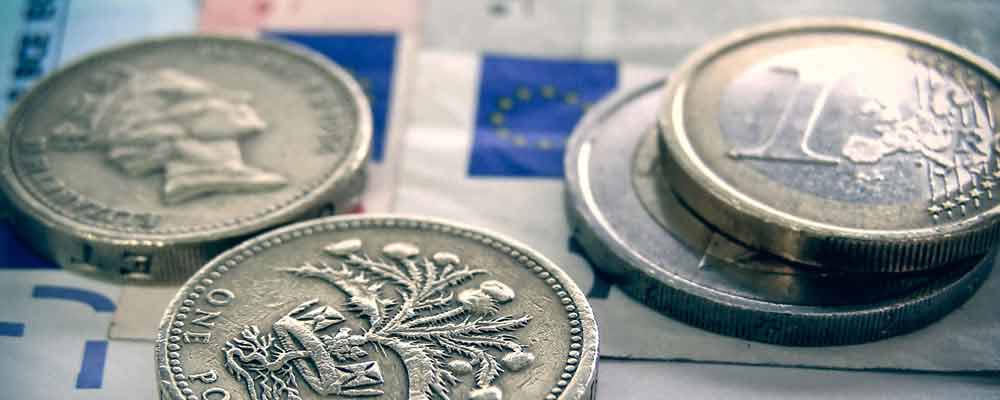- Pound Euro Climbs to 1.0888 – Euro Pound Slides to 0.9179
- Eurozone Composite PMI Misses the Mark – Pound Capitalises
- UK Data Proves Lacklustre – Pound Euro Steadies
The Pound Euro exchange rate climbed this morning following the release of a run of Eurozone Markit PMI figures.
Although the Eurozone’s economy remains on a firm footing, the measure of activity for the region did dip in August. The IHS Markit Eurozone composite PMI slipped from 55.8 to 55.7 in August, with decelerating growth in the services sector negating any progress made within the manufacturing sector.
Furthermore, the service-sector index printed at a seven-month low of 54.7, down from the previous 55.4, whilst the rate of expansion for ‘new work’ also dropped to its lowest levels since February.
Nonetheless, Chief Business Economist at IHS Markit, Chris Williamson noted that despite the slight drop, the figures remain strong, still pointing to a robust Eurozone economy:
‘The summer months have seen Eurozone economic growth moderate only slightly from the rapid pace seen in the spring. The solid PMI readings for July and August set the scene for another strong GDP number for the third quarter, with the surveys running at a level historically consistent with 0.6% growth. With such robust growth being sustained into August, the region is on course to see GDP rise by 2.1% in 2017, which would represent the best performance since 2007’.
This news allowed Sterling to claw back some of its recent losses against the Euro, though this climb was not long-lived.
UK Service Sector Growth Hits 11-Month Low, GBP Steadies
Today’s IHS Markit/CIPS services PMI for the UK demonstrated a fall to 53.2 in August, down from 53.8 in July and indeed below expectations of 53.5. This disappointing figure points to the slowest expansion within the sector since September 2016.
The fall was predominantly due to a drop in business activity and indeed new order growth, made all the worse by subdued client demand as businesses remain nervous about making large spending decisions. This is, of course, due to the ongoing uncertainty regarding the outlook for the UK economy, uncertainty that will likely continue until substantial progress is made in the Brexit negotiations.
The news was, not all bad however, as the service sector was revealed to have created more jobs in August for the third consecutive month – the fastest rate demonstrated since the start of 2016.
Nonetheless, the market reaction to this news was negative, pushing GBP EUR back down to relatively steady levels.
GBP EUR Forecast: Eurozone GDP and ECB Rate Decision
Whilst the data calendar remains somewhat sparse for Sterling in the near-term, the Eurozone will experience a range of releases this week, culminating in Thursday’s European Central Bank (ECB) interest rate decision and GDP figures.
Many investors are hoping that the ECB will announce plans regarding the tapering of its quantitative easing (QE) scheme.
Euro-area officials recently claimed that the ECB might be motivated to hold off on the implementation of their final QE plan until December, with the reason cited being that there is little appetite to rush, especially when considering the sheer complexity of the stimulus.
The US Dollar (USD) has made some headway today after thin trading yesterday left it vulnerable to last Friday’s disappointing bout of data releases. The relative strength of the US Dollar against the Euro is something to watch in the near-term, particularly as the situation with North Korea continues.
Indeed, if the North Korean crisis escalates then the US Dollar may become increasingly favoured alongside the more traditional safe-haven currencies like the Swiss Franc (CHF) and the Japanese Yen (JPY), whilst the Euro could be liable to fall (thus driving GBP EUR higher).
If, however, the crisis calms then the Euro may benefit from increasing demand as less risk averse traders return to the single currency.



